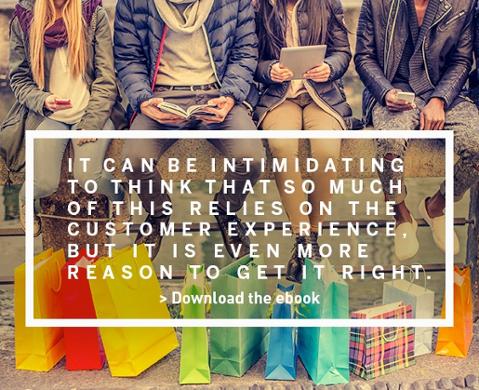Marketing has come a long way since the early days of what’s now known as traditional techniques, before the Internet boom. The customer journey has changed with each shift in marketing, causing the marketer’s role to shift as well.
PAN EVP Mark Nardone sat down with Heather Sears, Vice President of Marketing, National Markets, at YP, to discuss the evolution of the modern marketer.
Here are a few of Heather’s insights:
What are the differences in the modern marketer’s role from yesterday to today? What excites you about the opportunity of the modern marketer?
Today’s marketer is a turbo-charged version of yesterdays. We need to be faster, more agile and more data-centric because the consumer is moving across screens, devouring content, and even moving between physical locations during their daily activities and purchase journey more nimbly than ever before. The hyper-speed of consumers’ engagement with social, community, search and traditional activities – especially on mobile – means marketing happens in real time. This means marketing activities that may have been siloed, slow and simple in the past, need to evolve. They also likely cannot all be planned completely in advance – a living brand will have real-time, contextual reactions to consumer and environmental activities. I get excited by the opportunity to have intelligence on my consumers so that I can deeply understand their mindset and predict their needs. I like to over-deliver and data can empower that now more than ever.
How has the customer journey changed?
The old marketing funnel has morphed into a rollercoaster. It’s been called a pretzel and a zigzag, and the main differences include more information gathering across screens, locations (in/out of store), and communities (multiple sources of social recommendations). These data points support consumers altering the ultimate consideration set multiple times as they gather information, proactively and through passive exposure, to hone in on their ideal outcome. Consumers’ omni-channel approach to purchase is influenced by micro bits of information – micro moments of quick hits of information that trigger changes in perception and the ultimate direction of the shopping path.
What are your thoughts on the power and the ability of today’s content?
I heard a good quote at a digital leadership event at the Harvard Club last week: “Content is the path to purpose.” This is an interesting truism on what content can unlock. We all have very personal goals that we are acting on or thinking about. We want to be healthier, happier, wealthier, get a date, etc. We are moving towards our purpose, the purchase may be part of that, but there is a bigger personal journey most people are on than just to the cash register.
Content is now consumed on multiple screens – with mobile time growing very quickly – think of mobile like a remote control for life. So content is being designed to work on smaller screens and be consumed in quicker chunks. It has become more bite-sized with quick and flashy headlines, infographics, stats and images that are fast to consume. Video is more technically feasible now across screens and exploding.
And people are creating and consuming content at a tremendous pace. Every day there are 1 billion Google searches, 4 billion YouTube videos and 800 million Facebook shares. The scale of that shows the awesome potential of content to not only inform marketers but also shape the human experience.
With all of the data and analytics that are available to today’s modern marketer, how do you gain real-time data and make it actionable?
Big data in itself is not a strategy. Data should be used to supplement judgment and guide execution. Modern marketers deal with tons of data from external channels and internal platforms. The challenge is that there is a lot of noise and marketers need to identify the signal that they can act upon. Data scientists and engineers are some of the in-demand positions these days and can be a marketer’s best friend. Getting tools in place to analyze, measure and evolve content are critical to keeping pace with, and best influencing, consumer behavior.
Today’s modern marketers must address the differences between Boomers, Gen X, Gen Y and Gen Z. How do you see marketers targeting generational marketing?
Good question. The helm of generational power is changing hands – Millennials are surpassing Boomers with $1.7 trillion purchasing power. Generational marketing is really just another way of segmenting and brands should integrate this into a holistic understanding of their consumers as “generation” may not be the most actionable segmentation delineator for a brand. That said, certain trends that skew younger include less concern with privacy, more comfort with sharing, greater desire for authenticity (what is “real” behind all the flash), and openness to trying new engagement platforms that older generations do not immediately understand!
What is the importance of influencer marketing? What are the challenges? How do you use it?
With so much content creation and clutter, it is challenging to break through at scale. Hitching a brand to an influential entity can tap into their large fan/follower base and generate a brand halo due to the association. This includes more traditional celebrities as well as anyone with media reach. There are endless ways to do this, it really depends on objectives and budget. Dunkin’ Donuts had a great ad campaign this summer with David Ortiz and Rob Gronkowski singing. GoDaddy’s sponsorship of Danica Patrick put them on the map. On the less expensive side, I love how Famebit offers brands the chance to hire social media “celebrities” to give video testimonials. One of the challenges is control of the content – a brand can’t control what an influencer is always saying or doing.
Where do you think the industry is headed in 2016 and beyond?
We should see beacon technology gaining scale to support even more targeted mobile advertising. The Internet of Things will continue to expand the intelligence of physical goods and create even more data.
I think we will see more empowerment of local businesses – even with the tremendous growth of e-commerce and mobile commerce, the vast majority of consumer spend is at physical stores. Digital is highly influential of the purchases that happen offline and web rooming (looking online and purchasing in a store) is pervasive – 45% of 2015 holiday shoppers plan to do webrooming this year according to a Harris poll. People want to buy stuff “now,” be connected within their communities and have human engagement. We will see local businesses getting even savvier to deliver customers what they want.
Bonus Questions!
- Where do you go for your marketing resources? TrendWatching, LinkedIn, AdWeek, live events (Mobile Marketing Association, Internet Week, Advertising Week)
- Who influences you the most? I really like LinkedIn content to be exposed to experts who evolve my thinking. Both the well-known disrupters and achievers like Richard Branson and people who may be my peers but in different areas and have great insights and stories to share.
- Where do you see virtual reality trends fitting into a brand’s marketing strategy? VR is a new dimension for telling a story that can be meaningful and exciting to consumers. It can also showcase that a brand is an innovator and leader. Since VR is new to most people, trial it and learn from how people react. Be sure to get good agency and/or tech partners.




